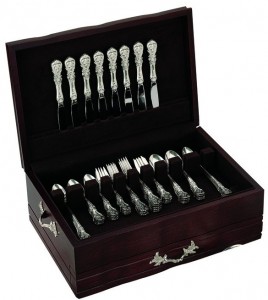Mental Models Applied: Don’t Fall for the “Too Nice to Use” Trap
Of the many stupid things to do in life, one of the most foolish is to the fall for the “too nice to use” trap. The moment I hear anyone, whether friend or family member, business associate or stranger, talk about how they “never use” something, I want to grab them by the shoulders and explain the mental models behind their actions.
It doesn’t matter if you are talking about vintage cars, books, sterling silver flatware, fine china, cashmere sweaters, carpets, tea pots, fountain pens, linens, a favorite pair of jeans from years ago, or a necklace inherited from your great grandmother, the moment you consciously or subconsciously avoid using an item because it is “too nice” or you don’t want to fear losing it, you are acting in a way that is not only irrational, but suffers from an undercurrent of denial about mortality.
To understand why people fall for the “too nice to use” trap, let’s consider the mental models involved. In time, you can train yourself to overcome this trap.
Mental Model: Denial
First, a basic fact about which most people are in denial: There will come a day when you will die. There is no use getting upset about this. It is a fundamental truth that cannot be avoided, no matter how much you push it off or refuse to acknowledge it.
What are the implications of accepting, and acknowledging, this truth? You quickly realize that any money you have saved, along with all of your material possessions, will be distributed to relatives and inevitably get broken, stored, stolen, dropped off at the Salvation Army, sold on eBay, or lost forever after being misplaced.
In other words, all of your wealth and worldly goods will eventually be distributed, lost, stolen, or dissipated within a few years, or if you are considerably wealthy, a few decades, after your death.
The lesson: If you don’t enjoy what you have, someone else (or even worse, no one else) ever will, meaning the money you spent on the item will be completely, totally, and irrevocably wasted.
Mental Model: Fear of Depravation or Financial Loss Coupled
Imagine you have a set of beautiful colored cut-crystal glasses that were very expensive. Perhaps you bought them. Perhaps they were given to you as a gift. Perhaps they were handed down through the family. The irrational “logic” used by many people who store these treasures away instead of using them frequently goes something like this: “I don’t want to risk breaking them!” Why fear breakage? If you break something, you lose the ability to utilize the object. Yet, by storing an object and not using it, you are effectively achieving the same disutility! It’s asinine!

Break out the fine china, put on the good sweater, and if something gets destroyed, to hell with it. As a very wise Jewish carpenter said a very long time ago, “life does not consist of an abundance of things”.
People don’t address this paradox because studies have shown the disutility of perceived loss is greater than the utility of perceived gain. In other words, people are far unhappier losing $1 than they would be earning $1.
The lesson: By storing objects and never getting any utility out of them, you are in nearly the same net position as you would have been had you taken a hammer and smashed them to bits. They are worthless to you. At some point, someone, somewhere, will use those same objects once you are older or dead, enjoy them, and, ultimately, break them. It may as well be you.
Mental Models: Price Anchoring and Sticker Price vs. Amortized Per Use Cost
In one collector’s forum, a man wanted to cut down his Christmas tree but worried that using a very expensive survival knife he owned would devalue the knife’s resale. In his mind, he is fixated on the price he paid for the item. Instead of buying the item to enjoy and make his life better, he bought the knife hoping to someday get back what he paid for it plus a little after inflation. As far as investments go, that is a terrible return. He essentially put his capital into hibernation, neither allowing it to increase his real purchasing power nor trading it for something that provided utility.
The lesson: Instead, a better way to look at the “cost” of an item is the per use amortized expense. If you buy a $300 gold-rimmed coffee cup and break it after using it once, your cost is $300. If you use it every morning for ten years, your per use cost was only 8.21¢ per use. Your initial acquisition price of an item is nearly irrelevant except to the extent that it provides one of the important variables in the per use cost calculation.
The Bottom Line, Takeaway Lesson
Life is short. Eventually, everything you save or preserve will get used by someone else, stolen, destroyed, or lost. Your agenda should be to make life as enjoyable and enriching as possible for you and your family. For some, that means taking trips around the world. For others, that means baking homemade sugar cookies every Christmas. For still others, that means always sitting down to family dinner, every night, without exception, and making it an event. The moment you stop enjoying the utility of something out of the fear of losing that same thing, you’ve effectively deprived yourself of any enjoyment it could have brought in the first place!
Break out the fine china, put on the good sweater, and if something gets destroyed, to hell with it. As a very wise Jewish carpenter said a very long time ago, “life does not consist of an abundance of things”. Making a god out of your possessions, elevating them above your own family’s enjoyment, is short-sighted, irrational, and fear-based. It’s a stupid way to go through life.


